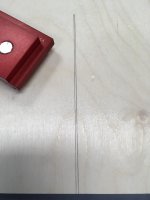I’ve decided to get a TS75 and an MFT/3 table with the guide rials. Unless someone convinces me otherwise I’m going with the TS75. This will be my only saw.
I’m going with the MFT table and likely a CT26.
This will be the beginning of my shop, though I have been trained with and frequently use Festool tools. I’m very familiar with the brand.
Right off the bat I’ve got a few questions:
What are the capabilities of this set up?
How accurate will the MFT/3 and TS set up be?
How can I build projects without a planer? Am I limited to sheet goods based projects?
How difficult is it to setup the MFT/3 table accurately? Are there any accessories that are highly recommended?
If you could choose one additional tool for the set up, what would it be (domino, sander, drill, router)? I’m leaning towards the router, is the OF 1400 sufficient? I love dovetails, but have read it can be complicated with the 1400.
It should also be noted a table saw is not an option due to space. This compact and versitile set up will work really well with my space.
Can someone link the newest models for the 3 products - it seems like they’ve made minor variations in 2017/18 to some of them.
That’s all for now, I’ll follow up with more questions once the post gains some traction! Thanks,
Jimxavier
I’m going with the MFT table and likely a CT26.
This will be the beginning of my shop, though I have been trained with and frequently use Festool tools. I’m very familiar with the brand.
Right off the bat I’ve got a few questions:
What are the capabilities of this set up?
How accurate will the MFT/3 and TS set up be?
How can I build projects without a planer? Am I limited to sheet goods based projects?
How difficult is it to setup the MFT/3 table accurately? Are there any accessories that are highly recommended?
If you could choose one additional tool for the set up, what would it be (domino, sander, drill, router)? I’m leaning towards the router, is the OF 1400 sufficient? I love dovetails, but have read it can be complicated with the 1400.
It should also be noted a table saw is not an option due to space. This compact and versitile set up will work really well with my space.
Can someone link the newest models for the 3 products - it seems like they’ve made minor variations in 2017/18 to some of them.
That’s all for now, I’ll follow up with more questions once the post gains some traction! Thanks,
Jimxavier

